| No. | Portrait | Name
(Birth–Death) | Term of office | Sovereign | Ref. |
|---|
| Took office | Left office | Time in office |
|---|
| Military Governors (1795–1798) |
| 1 | | Patrick Alexander Agnew
(1765–1813)
(in Trincomalee) | August 1795 | 1 March 1796 | 7 months | George III | |
| 2 | | James Stuart
(1741–1815) | 1 March 1796 | 1 January 1797 | 306 days | George III | |
| 3 |  | Welbore Ellis Doyle
(1758–1797) | 1 January 1797 | 2 July 1797 | 182 days | George III | |
| 4 | | Peter Bonnevaux
(c. 1752–1797) | 2 July 1797 | 12 July 1797 † | 10 days | George III | |
| 5 |  | Pierre Frédéric de Meuron
(1788–1813) | 12 July 1797 | 12 October 1798 | 1 year, 92 days | George III | |
| Resident and Superintendent (1796–1798) |
| 1 | | Robert Andrews
(1763–1821) | 12 February 1796 | 12 October 1798 | 2 years, 242 days | George III | |
| Governors (1798–1948) |
| 1 |  | Frederick North
(1766–1827) | 12 October 1798 | 19 July 1805 | 6 years, 280 days | George III | |
| 2 |  | Thomas Maitland
(1760–1824) | 19 July 1805 | 19 March 1811 | 5 years, 243 days | George III | |
| | John Wilson
(1780–1856)
Acting | 19 March 1811 | 11 March 1812 | 358 days | George III | |
| 3 |  | Robert Brownrigg
(1759–1833) | 11 March 1812 | 1 February 1820 | 7 years, 327 days | George III | |
| 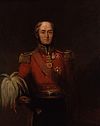 | Edward Barnes
(1776–1838)
Acting | 1 February 1820 | 2 February 1822 | 2 years, 1 day | George III
George IV | |
| 4 |  | Edward Paget
(1775–1849) | 2 February 1822 | 6 November 1822 | 277 days | George IV | |
| | James Campbell
(c. 1773–1835)
Acting | 6 November 1822 | 18 January 1824 | 1 year, 73 days | George IV | |
| 5 |  | Edward Barnes
(1776–1838) | 18 January 1824 | 13 October 1831 | 7 years, 268 days | George IV
William IV | |
| | John Wilson
(1780–1856)
Acting | 13 October 1831 | 23 October 1831 | 10 days | William IV | |
| 6 | 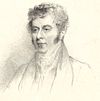 | Robert Wilmot-Horton
(1784–1841) | 23 October 1831 | 7 November 1837 | 6 years, 15 days | William IV
Queen Victoria | |
| 7 | 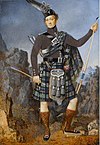 | James Alexander Stewart-Mackenzie
(1784–1843) | 7 November 1837 | 15 April 1841 | 3 years, 159 days | Queen Victoria | |
| 8 | 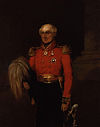 | Colin Campbell
(1776–1847) | 15 April 1841 | 19 April 1847 | 6 years, 4 days | Queen Victoria | |
|  | James Emerson Tennent
(1804–1869)
Acting | 19 April 1847 | 29 May 1847 | 40 days | Queen Victoria | |
| 9 |  | The Viscount Torrington
(1812–1884) | 29 May 1847 | 18 October 1850 | 3 years, 142 days | Queen Victoria | |
|  | Charles Justin MacCarthy
(1811–1864)
Acting | 18 October 1850 | 27 November 1850 | 40 days | Queen Victoria | |
| 10 | | George William Anderson
(1791–1857) | 27 November 1850 | 18 January 1855 | 4 years, 52 days | Queen Victoria | |
|  | Charles Justin MacCarthy
(1811–1864)
Acting | 18 January 1855 | 11 May 1855 | 113 days | Queen Victoria | |
| 11 | 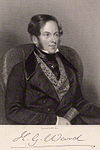 | Henry George Ward
(1797–1860) | 11 May 1855 | 30 June 1860 | 5 years, 50 days | Queen Victoria | |
|  | Henry Frederick Lockyer
(1797–1860)
Acting | 30 June 1860 | 30 July 1860 | 30 days | Queen Victoria | |
| | Charles Edmund Wilkinson
(1807–1870)
Acting | 30 July 1860 | 22 October 1860 | 84 days | Queen Victoria | |
| 12 |  | Charles Justin MacCarthy
(1811–1864) | 22 October 1860 | 1 December 1863 | 3 years, 40 days | Queen Victoria | |
| 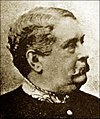 | Terence O'Brien
(1830–1903)
Acting | 1 December 1863 | 21 March 1865 | 1 year, 110 days | Queen Victoria | |
| 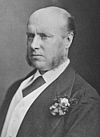 | Hercules Robinson
(1824–1897)
Acting | 21 March 1865 | 16 May 1865 | 56 days | Queen Victoria | |
| 13 |  | Hercules Robinson
(1824–1897) | 16 May 1865 | 4 January 1872 | 6 years, 233 days | Queen Victoria | |
| | Henry Turner Irving
(1833–1923)
Acting | 4 January 1872 | 4 March 1872 | 60 days | Queen Victoria | |
| 14 | 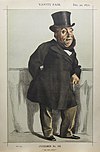 | William Henry Gregory
(1817–1892) | 4 March 1872 | 4 September 1877 | 5 years, 184 days | Queen Victoria | |
| 15 | 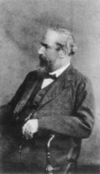 | James Robert Longden
(1827–1891) | 4 September 1877 | 10 July 1883 | 5 years, 309 days | Queen Victoria | |
|  | John Douglas
(1835–1885)
Acting | 10 July 1883 | 3 December 1883 | 146 days | Queen Victoria | |
| 16 | 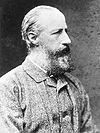 | Arthur Hamilton-Gordon
(1829–1912) | 3 December 1883 | 28 May 1890 | 6 years, 176 days | Queen Victoria | |
| 17 |  | Arthur Elibank Havelock
(1844–1908) | 28 May 1890 | 24 October 1895 | 5 years, 149 days | Queen Victoria | |
| | Edward Noël Walker
(1842–1908)
Acting | 24 October 1895 | 10 February 1896 | 109 days | Queen Victoria | |
| 18 | 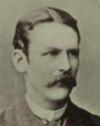 | Joseph West Ridgeway
(1844–1930) | 10 February 1896 | 19 November 1903 | 7 years, 282 days | Queen Victoria
Edward VII | |
| | Sir Everard im Thurn
(1852–1932)
Acting | 19 November 1903 | 3 December 1903 | 14 days | Edward VII | |
| 19 |  | Henry Arthur Blake
(1840–1918) | 3 December 1903 | 11 July 1907 | 3 years, 220 days | Edward VII | |
| 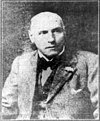 | Hugh Clifford
(1866–1941)
Acting | 11 July 1907 | 24 August 1907 | 44 days | Edward VII | |
| 20 |  | Henry Edward McCallum
(1852–1919) | 24 August 1907 | 24 January 1913 | 5 years, 153 days | Edward VII
George V | |
| 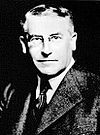 | Reginald Edward Stubbs
(1876–1947)
Acting | 24 January 1913 | 18 October 1913 | 267 days | George V | |
| 21 | 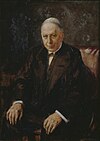 | Robert Chalmers
(1858–1938) | 18 October 1913 | 4 December 1915 | 2 years, 47 days | George V | |
|  | Reginald Edward Stubbs
(1876–1947)
Acting | 4 December 1915 | 15 April 1916 | 133 days | George V | |
| 22 |  | John Anderson
(1858–1918) | 15 April 1916 | 24 March 1918 † | 1 year, 343 days | George V | |
|  | Reginald Edward Stubbs
(1876–1947)
Acting | 24 March 1918 | 10 September 1918 | 170 days | George V | |
| 23 | 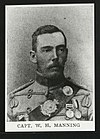 | William Henry Manning
(1863–1932) | 10 September 1918 | 1 April 1925 | 6 years, 203 days | George V | |
|  | Cecil Clementi
(1875–1947)
Acting | 1 April 1925 | 18 October 1925 | 200 days | George V | |
| | Edward Bruce Alexander
(1872–1955)
Acting | 18 October 1925 | 30 November 1925 | 43 days | George V | |
| 24 |  | Hugh Clifford
(1866–1941) | 30 November 1925 | June 1927 | 1 year, 6 months | George V | |
|  | Arthur George Murchison Fletcher
(1878–1954)
Acting | June 1927 | 20 August 1928 | 1 year, 2 months | George V | |
| 25 |  | Herbert Stanley
(1872–1955) | 20 August 1928 | 11 February 1931 | 2 years, 175 days | George V | |
| | Bernard Henry Bourdillon
(1883–1948)
Acting | 11 February 1931 | 11 April 1931 | 59 days | George V | |
| 26 | | Graeme Thomson
(1875–1933) | 11 April 1931 | 20 September 1933 | 2 years, 162 days | George V | |
| | Graeme Tyrrell
(1876–1964)
Acting | 20 September 1933 | 23 December 1933 | 94 days | George V | |
| 27 |  | Reginald Edward Stubbs
(1876–1947) | 23 December 1933 | 30 June 1937 | 3 years, 189 days | George V
Edward VIII
George VI | |
| | Maxwell MacLagan Wedderburn
(1883–1953)
Acting | 30 June 1937 | 16 October 1937 | 108 days | George VI | |
| 28 | 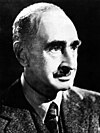 | Andrew Caldecott
(1884–1951) | 16 October 1937 | 19 September 1944 | 6 years, 339 days | George VI | |
| 29 | | Henry Monck-Mason Moore
(1887–1964) | 19 September 1944 | 4 February 1948 | 3 years, 138 days | George VI | |




































